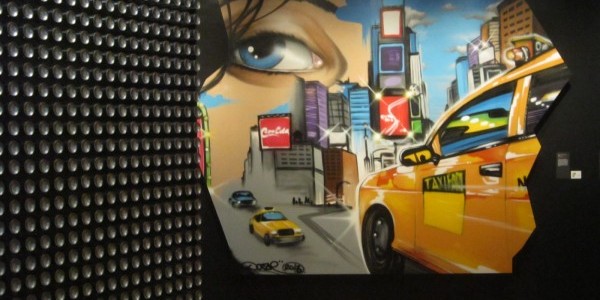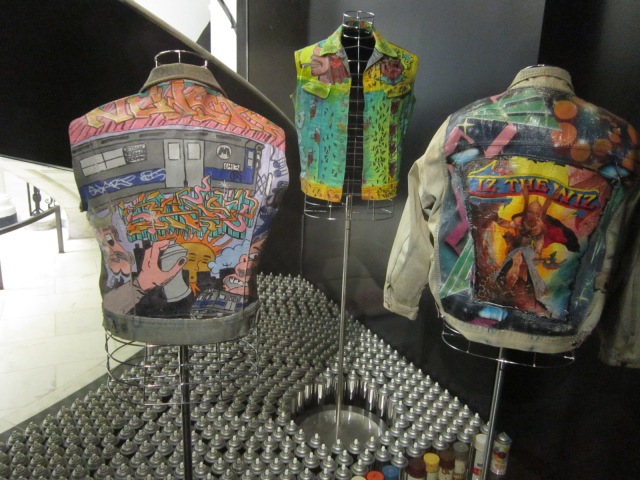The art of the 80s may finally be coming into its own. Several exhibits this year have put a spotlight on the decade and gone beyond the trio of Warhol, Basquiat, and Haring. Currently on exhibit at The Modern in Fort Worth is Urban Theater: New York Art in the 1980s. Among the artists included are Laurie Anderson, Jack Goldstein, Peter Halley, Julian Schnabel, and Christopher Wool.
The exhibitions are delving deeper. The Brooklyn Museum is presenting an exhibition of Basquiat’s notebooks created between 1980 and 1987. In New Orleans, an exhibition titled Basquiat and the Bayou focused on the artist’s Southern themes. Politics is the theme of a new exhibition of Keith Haring’s work at the DeYoung in San Francisco.
I like graffiti — Andy Warhol, 1980
That Andy Warhol, that stylish philistine, has said “I love graffiti” is almost enough to hate it — Paul Theroux, New York Magazine, 1982
The press release for Urban Theater makes note of the fact that prices have been soaring. Just this month a jacket tagged by Basquiat sold at Swann Galleries in New York for $9,100. A painting by Martin Wong, who is perhaps better known as a collector of and advocate for graffiti, tripled his previous record at Doyle when a painting titled Liberty Mourning the Death of Her Sister – Beijing brought $137,000.
An exhibit at the City Museum of New York earlier this year, City as Canvas: Graffiti Art from the Martin Wong Collection featured some of Wong’s work, in addition to graffiti examples by Haring and others.
Every so often a new form of art appears and is met with resistance and argument over whether it is art. This happened with photography, and it’s happening now with digital and conceptual art. In these cases, it was technology that fueled the change, but in the case of the 1980s, it was discontent.
Foreigners today often note the grittiness of New York, especially the subways. That’s true compared to many other cities around the globe- even the subways in Buenos Aires, a city known today for its graffiti, are clean by comparison. Even so, the state of affairs today is much improved from the 1980s- that is if you consider the absence of graffiti from structures and subways an improvement.
There are many people out there, perhaps more today than then, who like graffiti. And it just doesn’t seem the same in a gallery, or the Museum of the City of New York. The city made a better canvas.
But here we are.
The creative genius of the artists and political energy of the art would not have survived if it wasn’t for the foresight of artist Martin Wong. He saw it as necessary, or perhaps just interesting to collect the notebooks and artifacts of graffiti artists at a time when the larger voice of the city was screaming “Clean it up.”
The debate over whether graffiti is art is probably settled, but any debate over the right to create it is certainly ongoing. The legacy regarding impact may go beyond the artistic value itself. Visualizing the abstract of a word, and the formation of that word into a “tag,” which represents an artist. That was done on railroad cars in the 1980s, and electronically today.
We have the photographs and the remnants, but there are few opportunities to collect the actual canvases. Created by more traditional means, Wong’s work integrated the poetry of his partner Miguel Piñero into cityscapes of the Lower East Side.
And those jackets, like the one that sold recently at Swann (several were on display in New York) that everyone wanted and many artists created back then- they are perhaps the most genuine and sustainable example of the art form and something increasingly sought after.
Discover more from Urban Art & Antiques
Subscribe to get the latest posts sent to your email.



